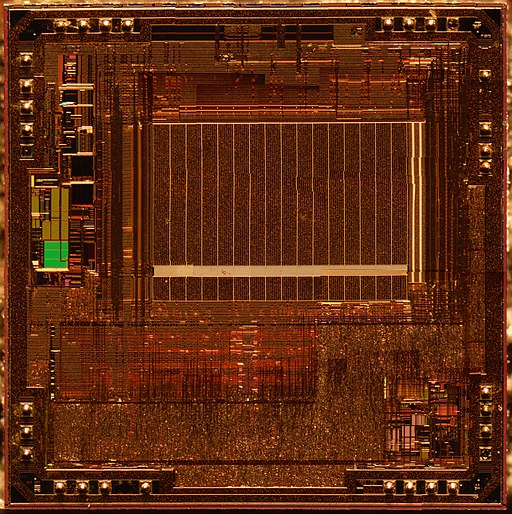Introduction to Microcontrollers and Microcontroller Architecture
Welsh Centre for Printing and Coatings
Tuesday October 1, 2024

50 years of teaching microprocessors at Swansea!
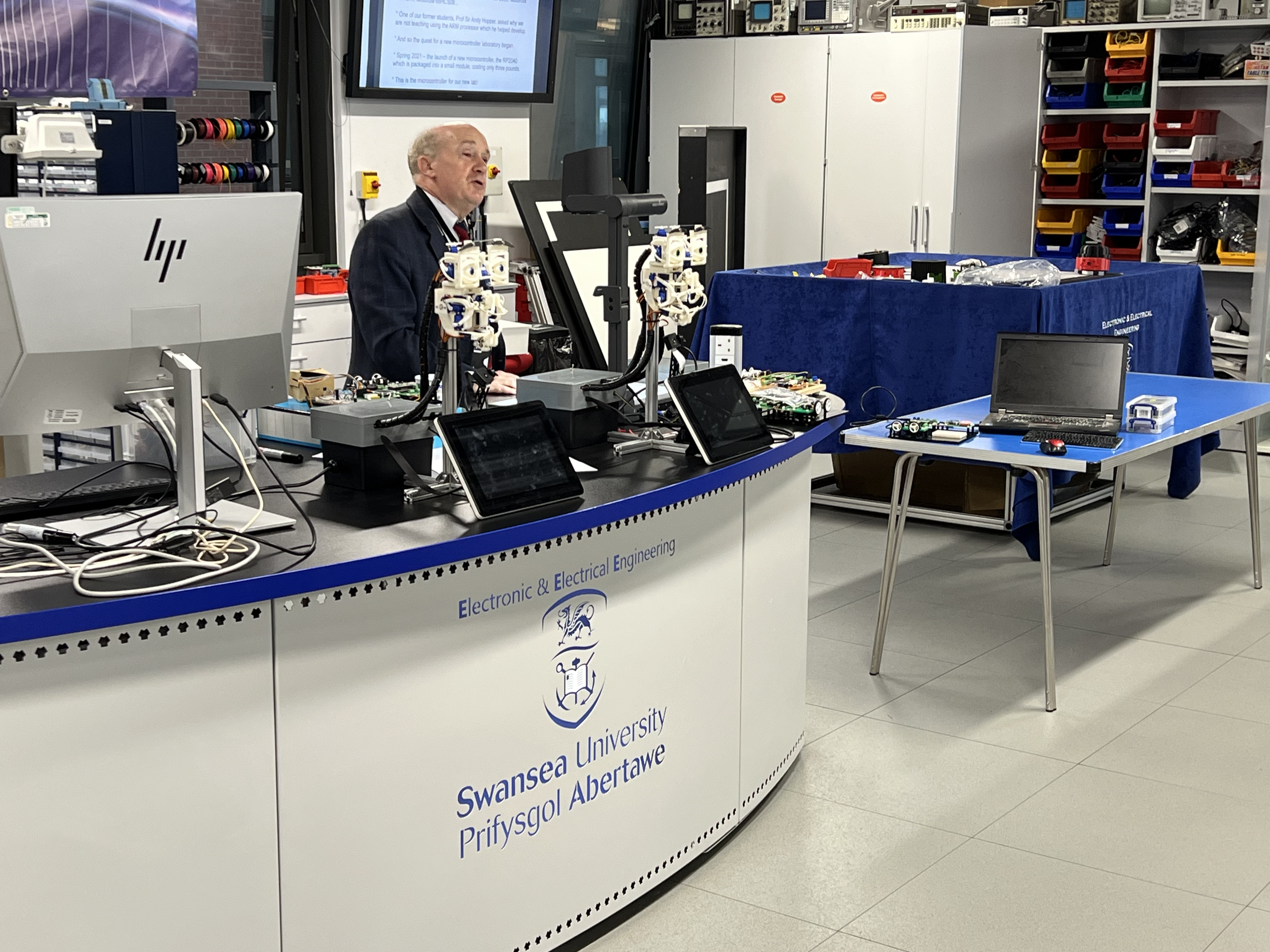
Dr Davies in the Electronics lab
A brief history by our former colleague, Honoury Lecturer Dr Timothy Davies.
- Started in 1972/1973 by Prof. David Aspinall and Dr. Erik Dagless, using bespoke equipment based on the Intel 8008.
- Always using 8-bit micros such as Intel 8008, Intel 8085, Motorola 68HC11, Motorola 68HCS08…
- Take-home lab, developed by Dr Davies, in 2020, used the Arduino Nano which is based on the Atmel (now MicroChip) ATmega328
- One of our former students, Prof Sir Andy Hopper, asked why we are not teaching using the ARM processor which he helped develop.
- Spring 2021 - the launch of a new microcontroller, the RP2040 which is packaged into a small module, costing only three pounds.
- This is the microcontroller for our second-year EG-252 lab and is also used in the third-year module EG-3082 Embedded Systems launching this year,
- You will therefore be using microcontrollers throughout this program
Introduction
In this week’s lecture, you will be given an introduction to microcontrollers focusing on what a microcontroller is, where they can be found and how they can be described using the their architecture. The lecture then moves on to introduce the Atmel ATmega328 microcontroller, which will be used in the practical sessions in this course, looking at its core architecture including the function of the arithmetic logic unit and registers.
Topics Covered in this Lecture
What is a Microcontroller?
A microntroller is a compact integrated circuit designed to govern a specific operation or set of operations within an embedded system.
At a high level of abstraction, a microntroller includes three core components within a single chip:
- A central processing unit (CPU)
- Memory, and
- Input/output (I/0) peripherals
Where are Microcontrollers Used?
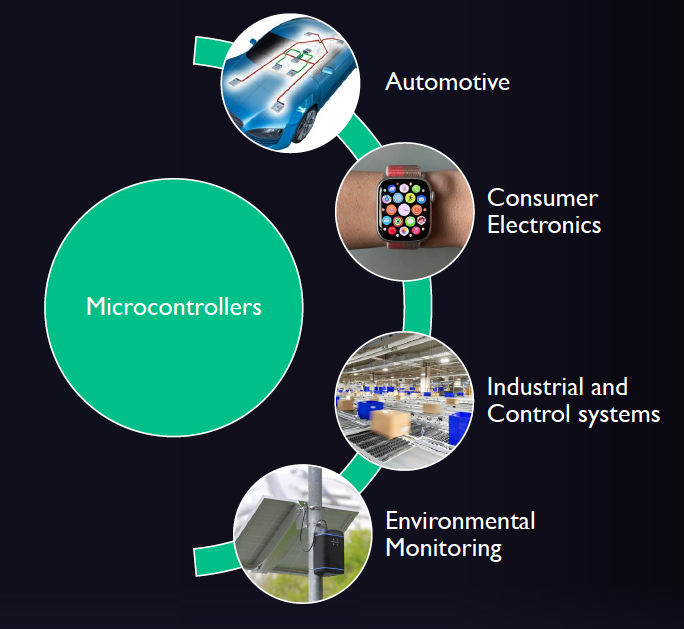
Figure 1: Some industrial uses of microcontrollers
Automotive applications

Applications of microcontrollers in the automotive industry
|
|
Consumer electronics
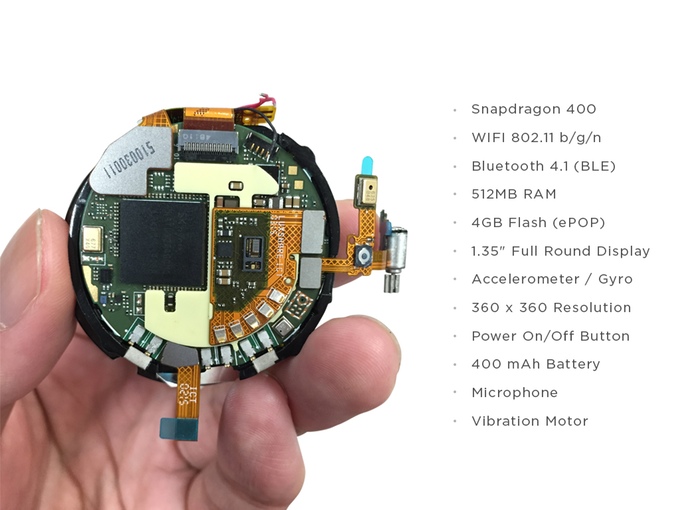
Applications of microcontrollers in consumer electronics
|
|
Industrial applications

Applications of microcontrollers in manufacturing systems
|
|
Environmental monitoring
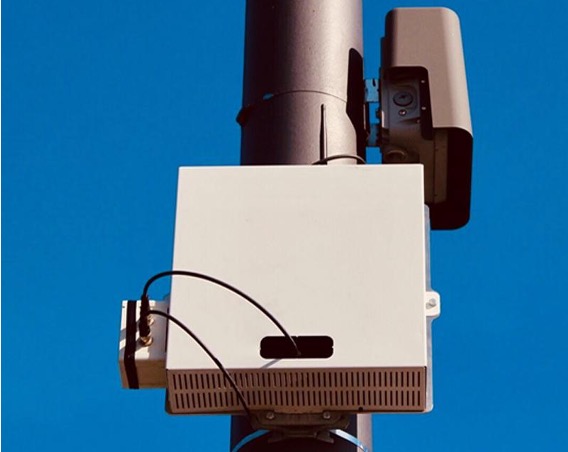
Applications of microcontrollers in environmental monitoring
|
|
Microcontroller Market Forecast
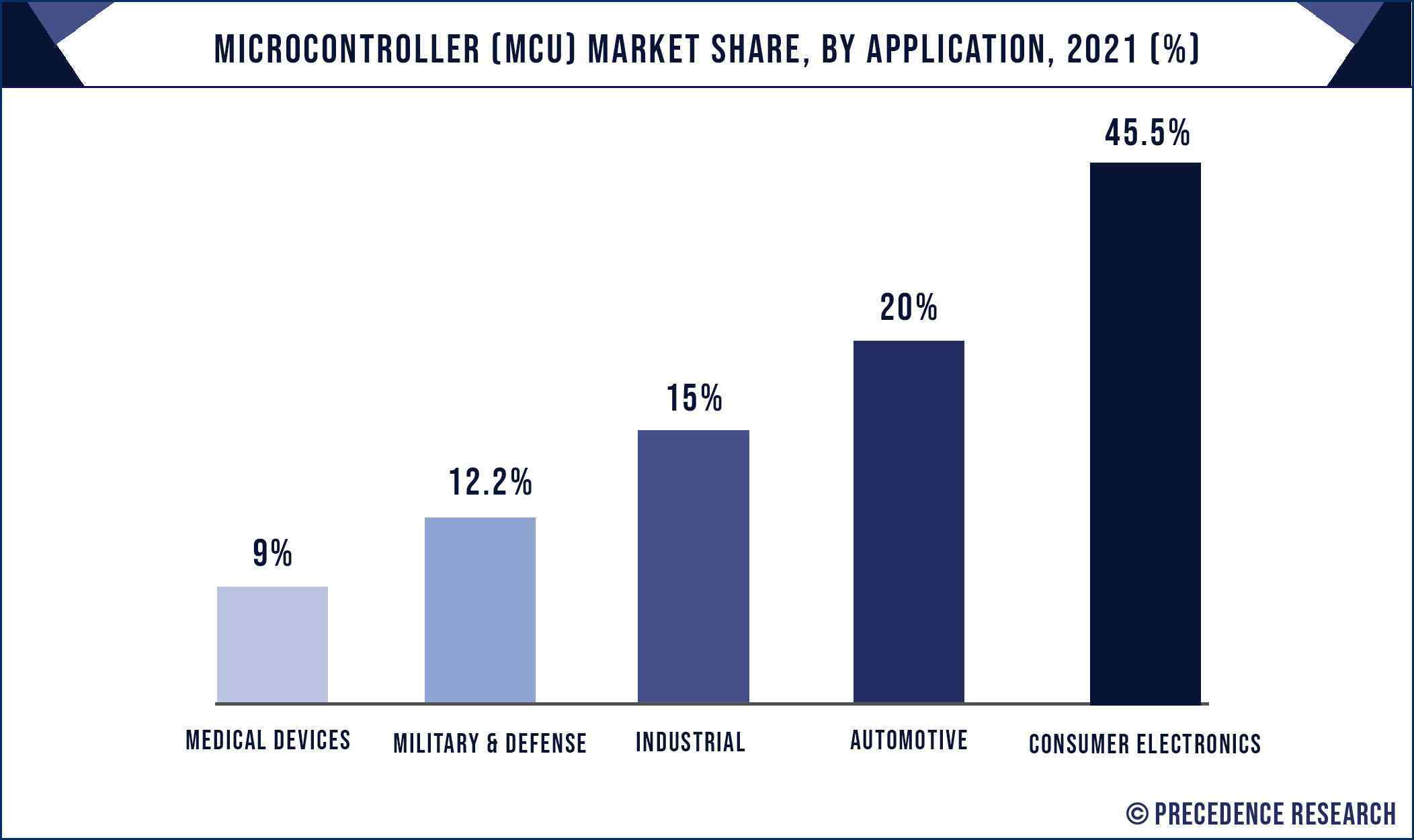
How do we Describe Microcontrollers?
Architecture
Definition from the Oxford English Dictionary architecture
Computing. The conceptual structure and overall logical organization of a computer or computer-based system from the point of view of its use or design; a particular realization of this6.
Number of Bits

Figure 7: Architecture diagram showing number of bits used in a microcontroller
Figure 8 shows the data memory map of the Atmel Atmega328 which is an 8- bit MCU.

Figure 8: Memory map for the Atmel Atmega328 MCU
Applications of 8-bit and 32-bit MCUs
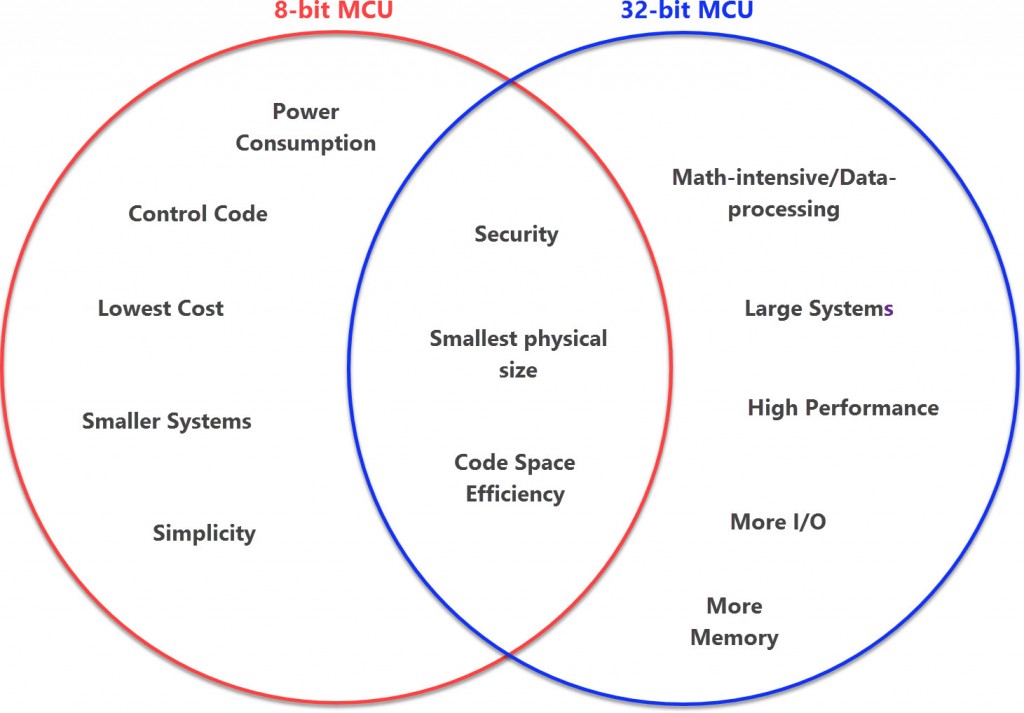
Market share of 8-bit, 16-bit and 32-bit MCUs in 2021
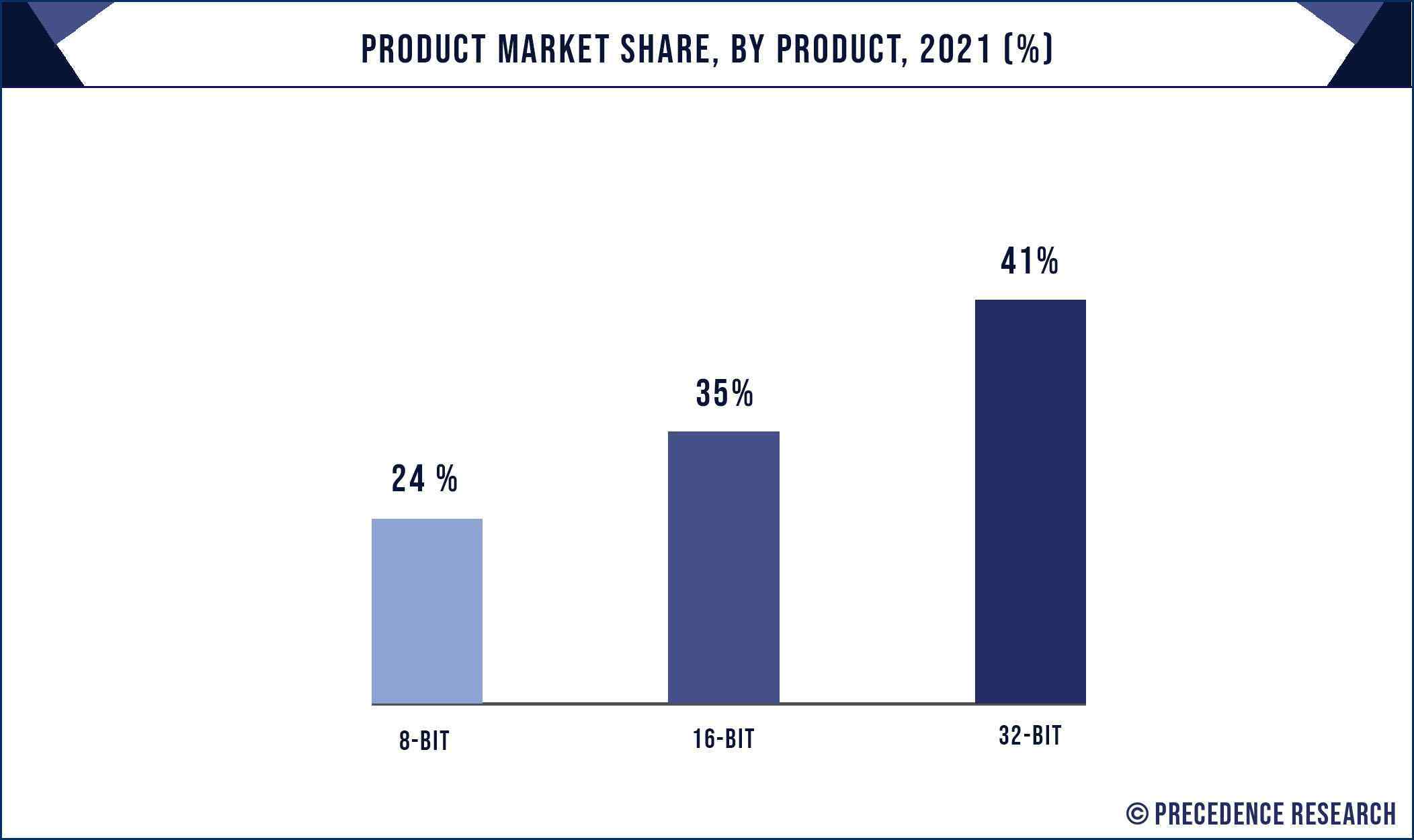
Memory

Figure 11: Architecture diagram showing memory types used in microcontrollers
Embedded vs external memory
Memory in modern microcontrollers can be classified as embedded or external dependent on whether this is physically located within the MCU itself or is connected separately.
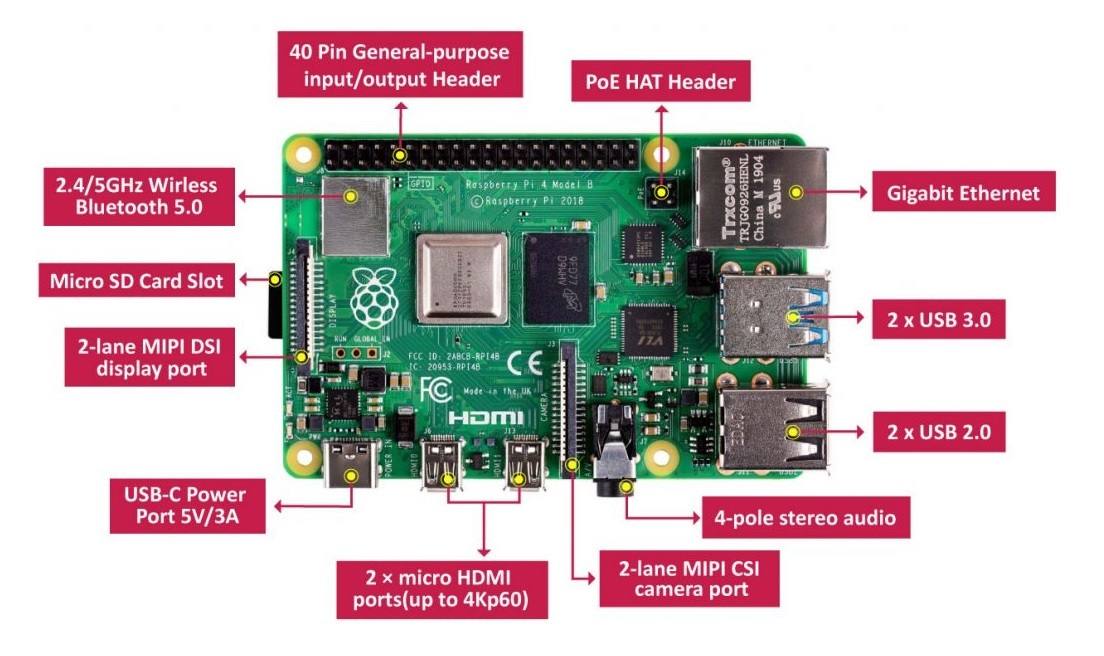
Volatile vs non-volatile embedded memory
Broadly speaking embedded memory that is found in a microcontroller can be classified into two categories:
- Volatile: data is lost when power is removed – this is temporary storage.
- Non-volatile: data is retained when power is removed – this is permanent storage.
Volatile and non-volatile memory can be further classified as illustrated in Figure 13.
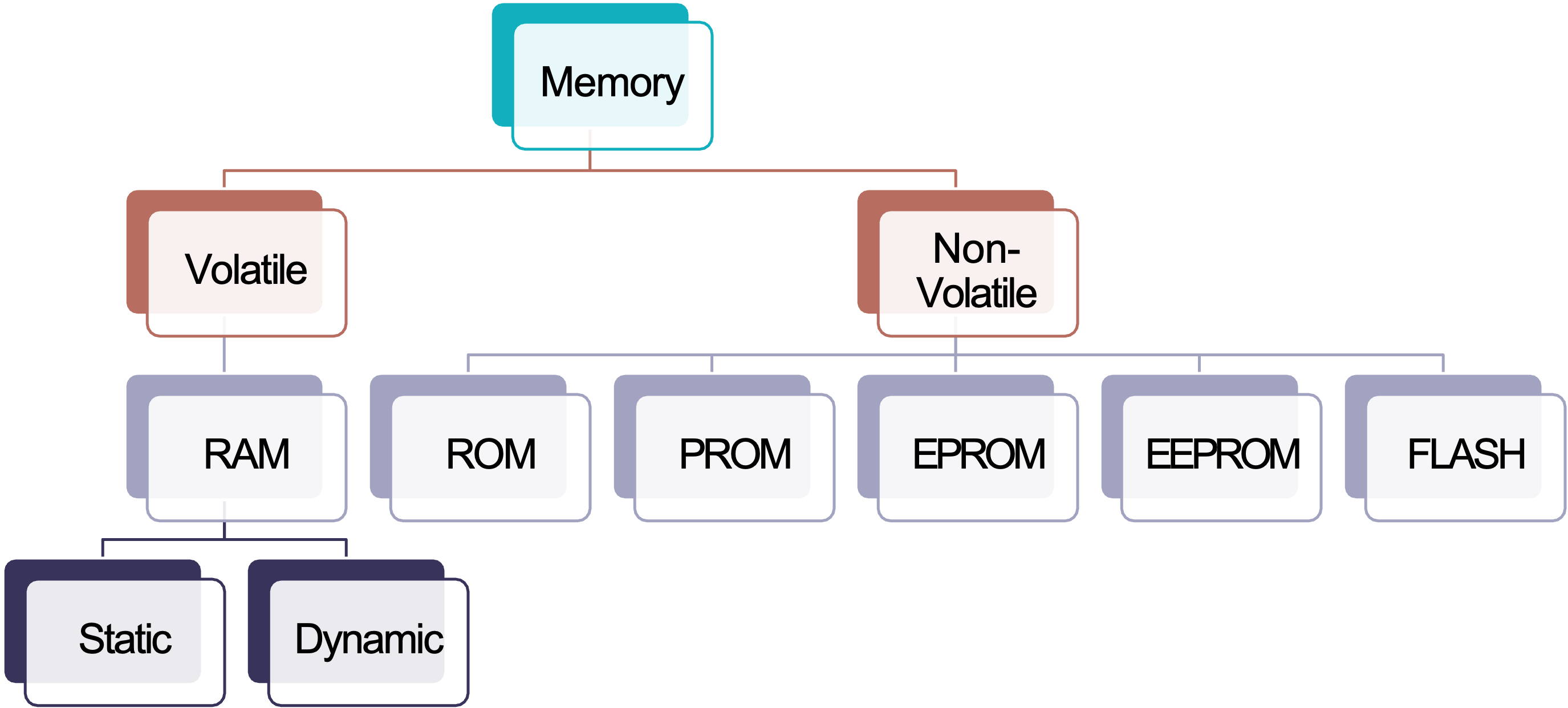
Figure 13: Classification of volatile and non-volatile memory.
Instruction Set Architectures

Architecture diagram showing instruction sets used in microcontrollers
Reduced instruction Set Computer (RISC)
A RISC is a device with a small, highly optimized set of instructions which utilizes registers and a highly regular instruction pipeline, allowing instructions to be completed in a low number of clock cycles.
Complex Instruction Computer (CISC)
A CISC is a device in which single instructions can execute several low-level operations or are capable of multi-step operations or addressing modes within single instructions.
Example
As an example, consider the case where you want to multiply two numbers stored at addresses 0x0010 and 0x0011 respectively.
On a RISC based architecture microcontroller the code would look something like:
Memory Architectures
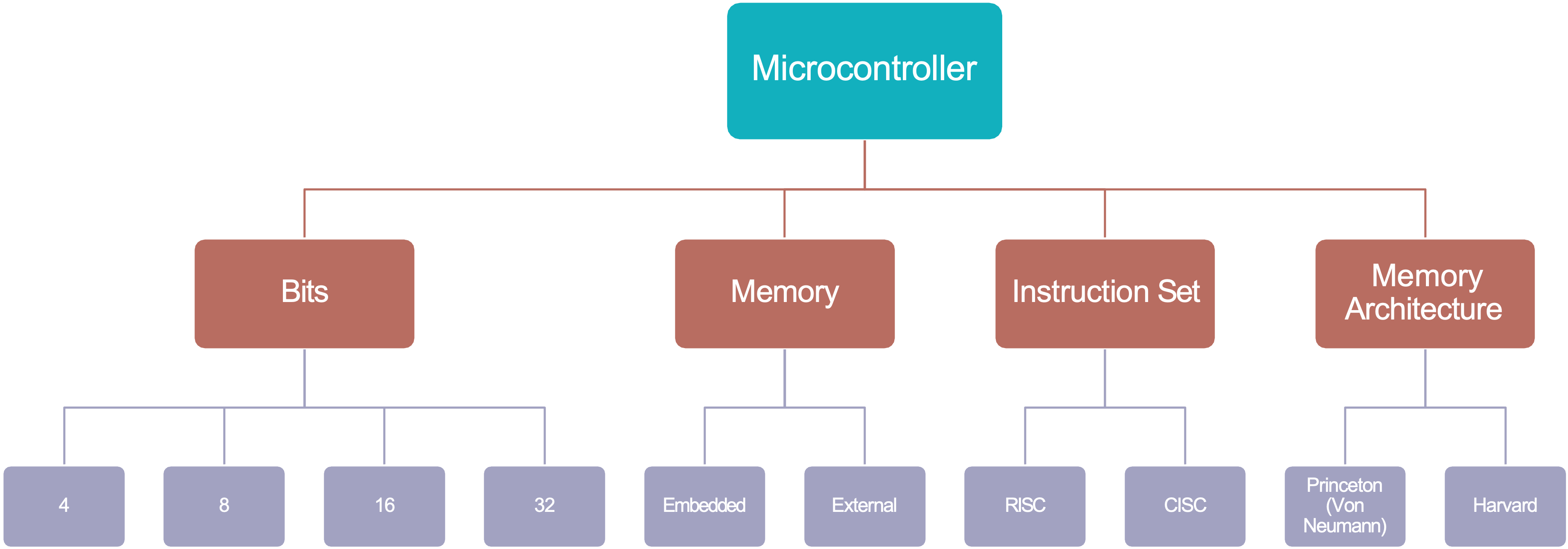
Figure 14: Architecture diagram showing the memory architectures used in microcontrollers
Von-Neumann (Princeton) architecture

Figure 15: The Von Neumann architecture—data memory and program code use the same memory storage area and data busses
Harvard architecture

Figure 16: The Harvard architecture—data memory and program code use different memory storage areas and busses.
Modified Harvard architecture

How is a Microcontroller Described?
In summary, the final MCU classification shown in Figure 18 represents some of categories under microcontroller architecture which are focused around the system itself.

Figure 18: Classification of microcontroller systems
System or Core Architecure
In general, most microcontroller manufacturers will present a system wide, or core architecture in the form of a diagram which will appear early on in the data sheet for the device.
Atmel ATMega328P AVR

Figure 19: Block Diagram of the AVR Architecture (Source: Figure 6.1, Page 9 of the Atmel ATMega328P data sheet (Atmel 2015))
NXP HCS08 MCU
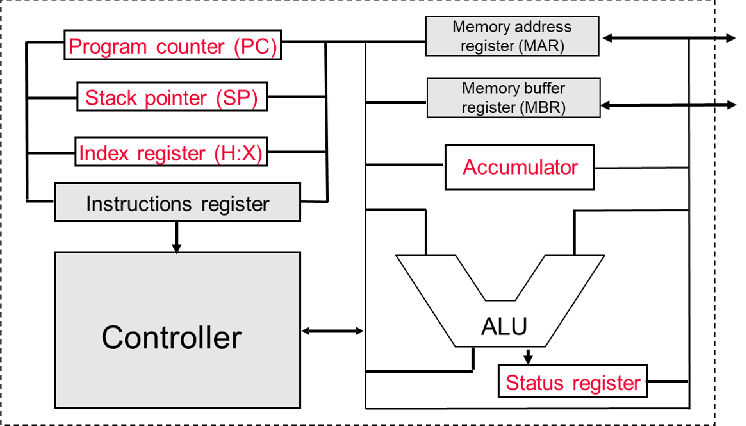
Figure 20: Block Diagram of the NXP HCS08 Architecture
The Atmel ATmega 328 Microcontroller
Introducing the Atmel ATMega328 MCU
This is an 8-bit CMOS microcontroller based on the AVR® enhanced RISC architecture with 131 instructions.
It has 2KB of Internal SRAM, 32 KB of Flash Memory and 1 KB of EEPROM.
It has 32 General Purpose Registers.
It can achieve up to 20 MIPS at 20 MHz (maximum clock frequency).
There are 8 Analog I/O pins connected to 10-bit analogue to digital converter (ADC).
There are 22 Digital I/O pins (6 capable of pulse-width modulation (PWM)).
The AVR core uses a Harvard memory architecture – with separate memories and busses for program and data.
Arithmetic Logic Unit
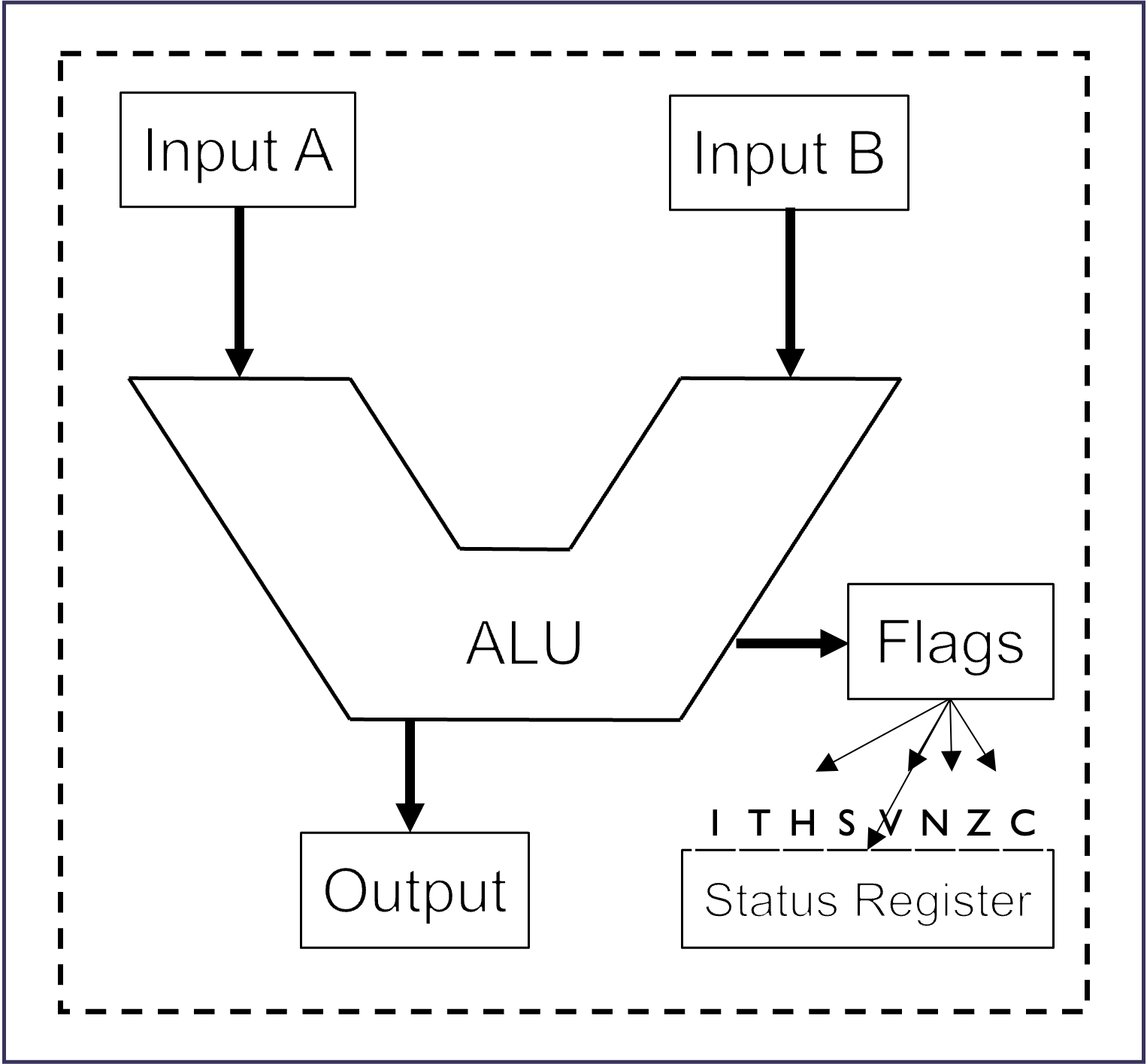
Figure 22: General purpose arithmetic logic unit (ALU)
Operation of the ALU
First, numbers are read from storage into the ALU’s data input ports.
Once inside the ALU, they’re modified by means of an arithmetic or logic operation (
ADD,SUB,AND,OR…)Flags are set in the Status Register according to the result of the operation.
Finally, the data is written back to storage via the ALU’s output port.
Example instruction

Figure 23: Add without carry instruction for the ATMega328
Example of the ALU from the 74LS181
The 74LS181 is a 4-bit microcontroller that supports 16 logical and 16 arithmetic operations.
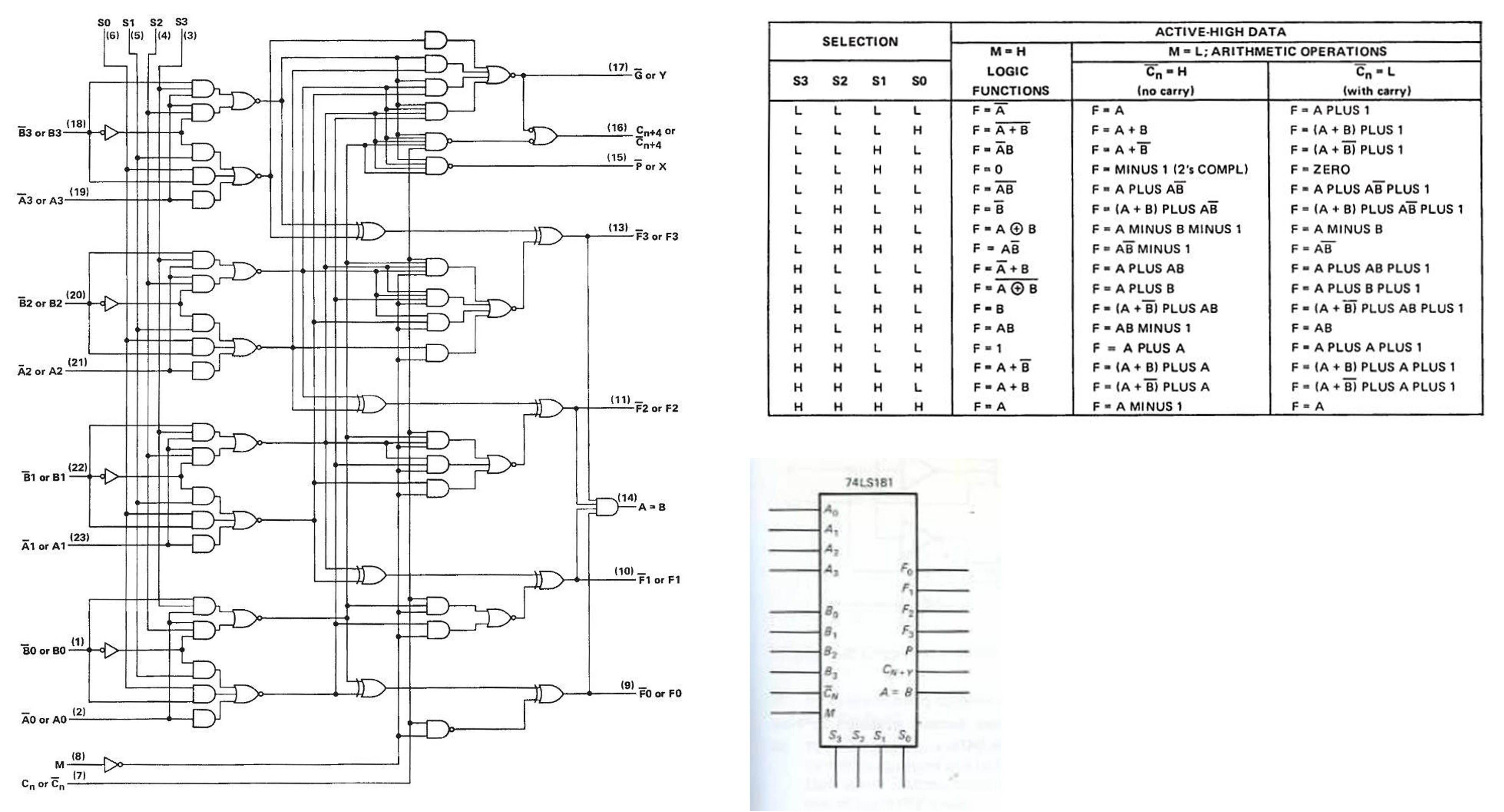
Figure 24: The ALU for the 74LS181 MCU
Registers
A register is a group of memory bits with special addressing characteristics which is often used for a particular purpose.
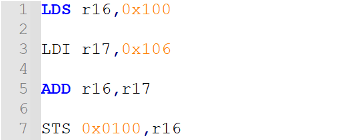
Figure 25: Use of registers in ATMega328 programms
Registers in the ATMega328 MCU
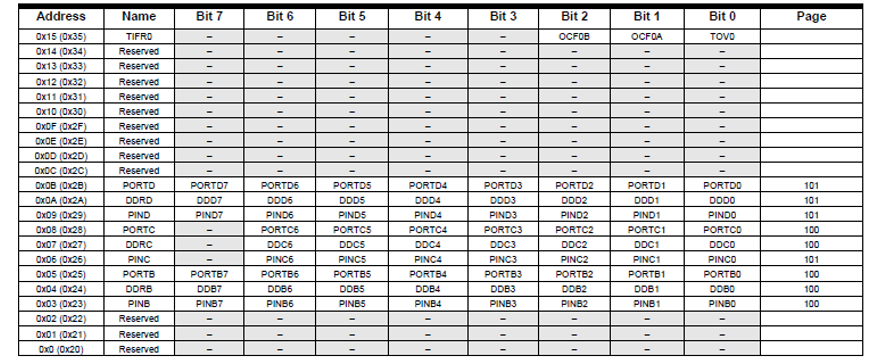
Figure 26: Part of the memory map of the Atmel ATMega328/P MCU
The Register File
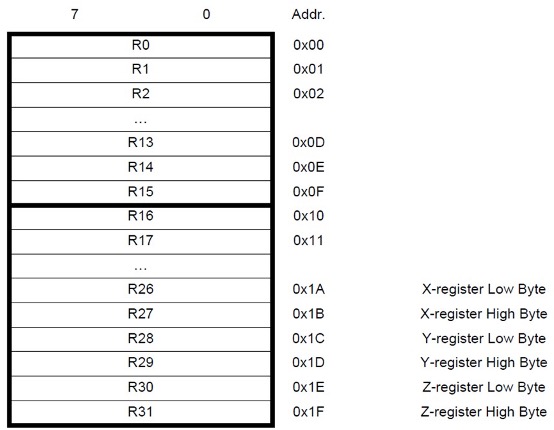
Figure 27: The register file for the Atmel ATMega328/P MCU
Each register is also assigned a data memory address, mapping them directly into the first 32 locations of the user data space.
Most of the instructions operating on the Register File have direct access to all registers, and most of them are single cycle instructions, however:
R0–R15are not available for all instructions, andR26–R31have some added functions as pointer registers.
Using the Register File

Figure 28: Using the registers for an ADD without carry operation

Figure 29: Using the registers for an Load immediate (LDI) operation
X- Y- Z-Pointer Registers

Figure 30: The x-, y- and z- registers
Summary
In this lecture we have:
Familiarized ourselves with what a microcontroller is and where they are used.
Introduced describing a microcontroller by considering parts of its architecture and
Begun to look at the Atmel ATmega328 microcontroller focusing on its register file and the general-purpose registers.
On Canvas
There is a Canvas quiz which tests your recall of the topics covered in this lecture.
Next week
Next week we will look at Data Representation.
Footnotes
Source of original image used in Figure 2: www.linkedin.com/pulse/microcontrollers-used-automotive-applications-field-amin-agina. The original image is no longer accessible.
Source of image used in Figure 3: www.electronicsweekly.com/blogs/distribution-world/communities/innovative-smartwatch-challenges-apples-watch-design-2015-10
Original source of image used in Figure 4: investinfrance.fr/high-technology-industry/robotic-arm-catch-for-electronic-assembly-line-the-robot-for-sm/. This original image is no longer available online.
Source of image used in Figure 5: www.openpr.com/news/1799966/hawa-dawa-installs-the-largest-air-quality-measurement-network
Source of imaged used in Figure 6: www.precedenceresearch.com/microcontroller-mcu-market
“architecture, n., sense 6”. Oxford English Dictionary, Oxford University Press, July 2023, https://doi.org/10.1093/OED/5575991854
The source of the Venn diagram used in Figure 9: http://lreese.dotsenkoweb.com/2017/07/31/iot-choosing-8-bit-vs-32-bit-mcus
Source of image used in Figure 10: www.precedenceresearch.com/microcontroller-mcu-market
Source of image used in Figure 12: www.hackatronic.com/raspberry-pi-4-specifications-pin-diagram-and-description.
This gets around the bottleneck that can occur using a Von-Neumann memory architecture with lower costs than having two separate memories.
Source of Figure 21 is BregesT65421354, CC BY-SA 4.0 <https://creativecommons.org/licenses/by-sa/4.0>, via Wikimedia Commons.

